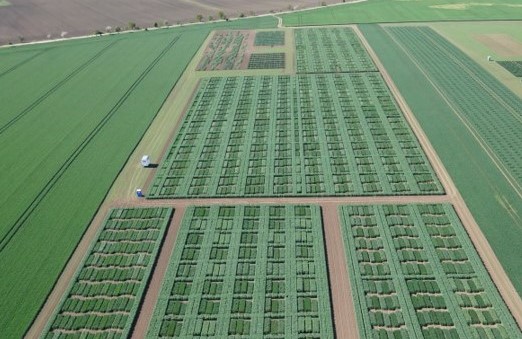Exploiting genotype × location × year × management interactions for sustainable crop production
This use cases addresses challenges in breeding of crops and will exploit possibilities to build up required data management processes that enable genotype × location × year × management interactions.
Partners:
Leibniz Institute of Plant Genetics and Crop Plant Research (IPK)
University of Hohenheim

Background
In current breeding practice, disease-resistant and yield-stable varieties are selected for plant production, which show a high average yield and excellent quality characteristics in multienvironmental field trials. In this process, the focus lies entirely on the scale “genetics”, and trial environments are subject to local production techniques with regard to fertilization and plant protection when varieties are approved. Environmental and management parameters are considered noise terms in statistical models. Only in later stages, such as in regional variety trials or detailed experiments at breeding companies, follows an evaluation of specific variety suitability for individual environments and recommendations for optimal management. However, this “one-size-fits-all” strategy is not suitable for developing locally adapted varieties that consider “genotype × location × year × management” interactions to meet the needs of future sustainable crop production. A consequence is a gap between selection success in experimental environments and on farms. One opportunity to overcome this bottleneck is to deepen our understanding of genotype × location × year × management interactions and develop prediction models that integrate data from different scales, i.e., parameters describing the environment (e.g., soil properties, precipitation, temperature, and plant available water), crop management (e.g., fertilization and pesticide management), and genetics. The integrated use of data from genotypes, environments and crop management is currently hampered by a lack of availability of comprehensive curated data.
Objectives
The main objective in this use case is to build up the required data management processes and prototype analysis workflow that enable knowledge-based prediction models considering genotype × location × year × management interactions for crops. Data on environmental parameters, weather data, trial design, genetics of varieties and important agronomic traits will be curated, harmonized, stored and made available in a FAIRagro infrastructure. The data will be provided by public real-world laboratories focusing on experimental field stations. The expected results will enable a comprehensive and continuous use of data sources needed for exploiting genotype × location × year × management interactions for sustainable crop production.

